Struggling with marketing campaign management? You’re not the only one.
A marketing campaign is a massive puzzle with tons of pieces that the campaign manager has to gather. Creativity, audience analysis, analytics, budgeting — there are many factors at play, and tracking all of them is no piece of cake.
But I got you covered! In this article, learn about types of marketing campaigns, explore the most prominent examples, and find an easy five-step guide to managing your own marketing campaigns.
Contents
What is marketing campaign management?
Marketing campaign management is the strategic planning, execution, and monitoring of marketing activities to achieve marketing goals within a specified timeframe. It implies coordinating multiple channels, messages, and resources to effectively reach and engage the target audience while assessing and analyzing the results.
Simply put, everything you do marketing-wise to launch your product, improve brand awareness, or boost sales is a part of your marketing campaign management.
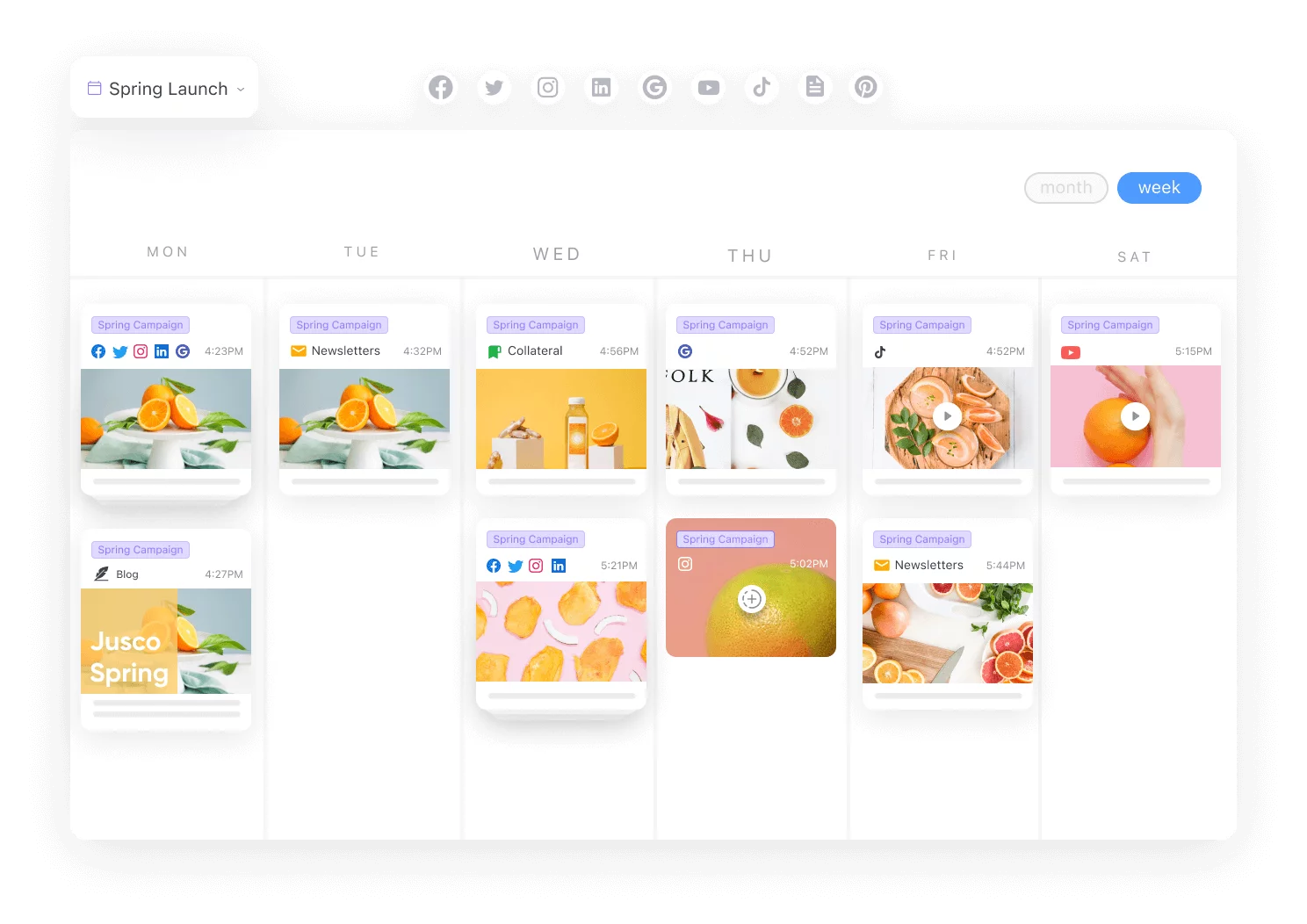
managing a marketing campaign across multiple channels in Planable
Types of marketing campaigns (with examples)
Marketing campaigns get super versatile and creative in terms of form and content. Let’s dig a bit into the types of marketing campaigns and dissect a couple of examples for inspiration.
Product marketing campaigns
Product marketing campaigns are strategic initiatives that promote and raise awareness of a specific product or service. Through targeted messaging and various marketing activities, these campaigns aim to generate interest, drive demand, and boost sales.
A remarkable example of such an effective marketing campaign is Nintendo Switch. Nintendo effectively showcased the console’s unique features, versatility, and gaming experiences through conceptual ads, engaging social media campaigns, and a compelling game lineup.
The campaign captured attention with its iconic “click” or “snap” sound when detaching the Joy-Con controllers, symbolizing the console’s seamless transition between handheld and console modes. The Nintendo Switch campaign resulted in the console’s tremendous popularity and commercial success in the gaming market, making Nintendo Switch the third bestselling console of all time.
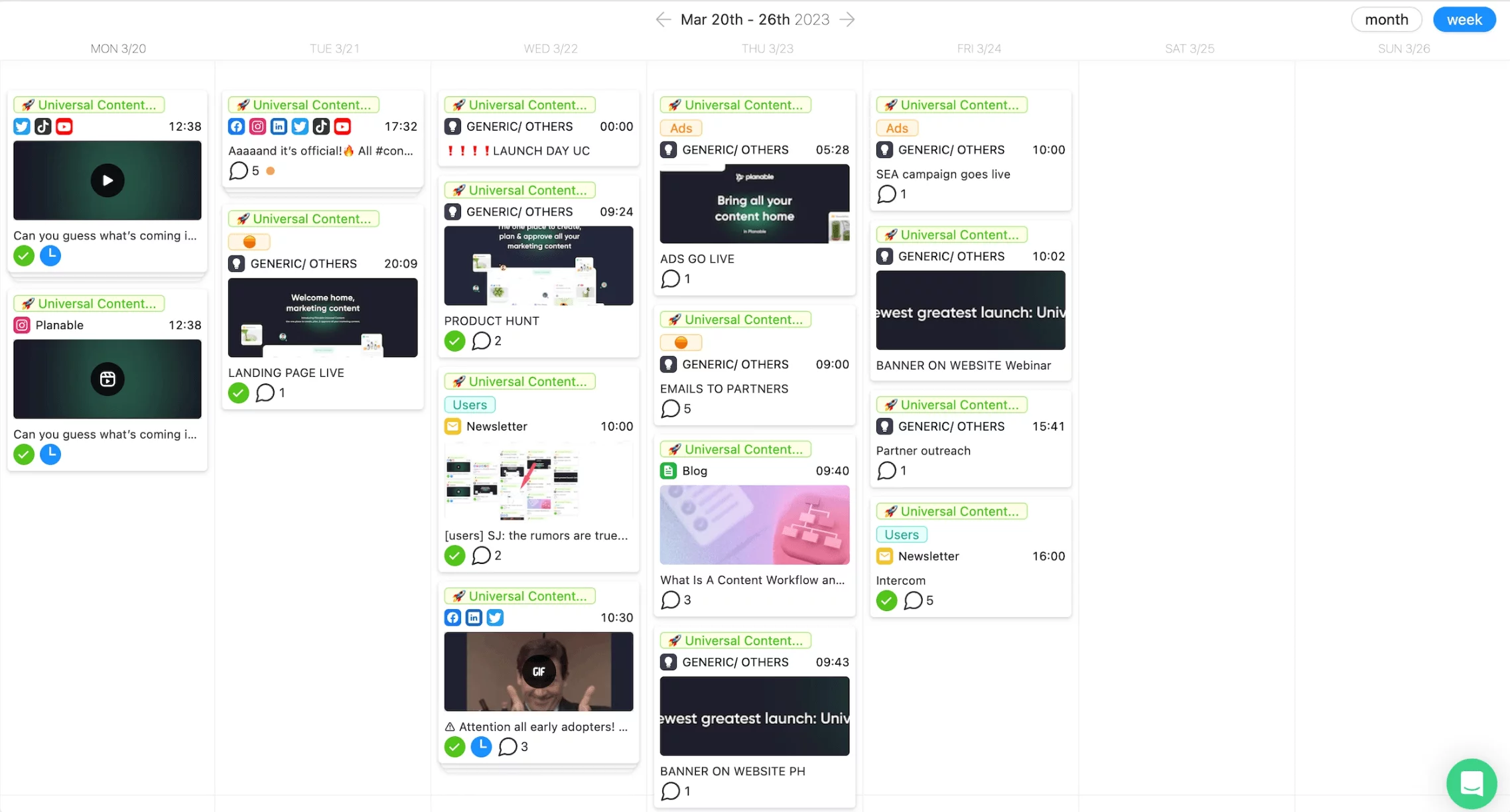
visually managing a product launch campaign in Planable
Brand awareness campaigns
This type of campaign aims to raise awareness of your brand and make it more recognizable to the audience. An excellent example of a sound brand awareness campaign is Spotify Wrapped — a yearly campaign held by Spotify where users share their music stats with the most played songs, top 100 playlists, and favorite artists.
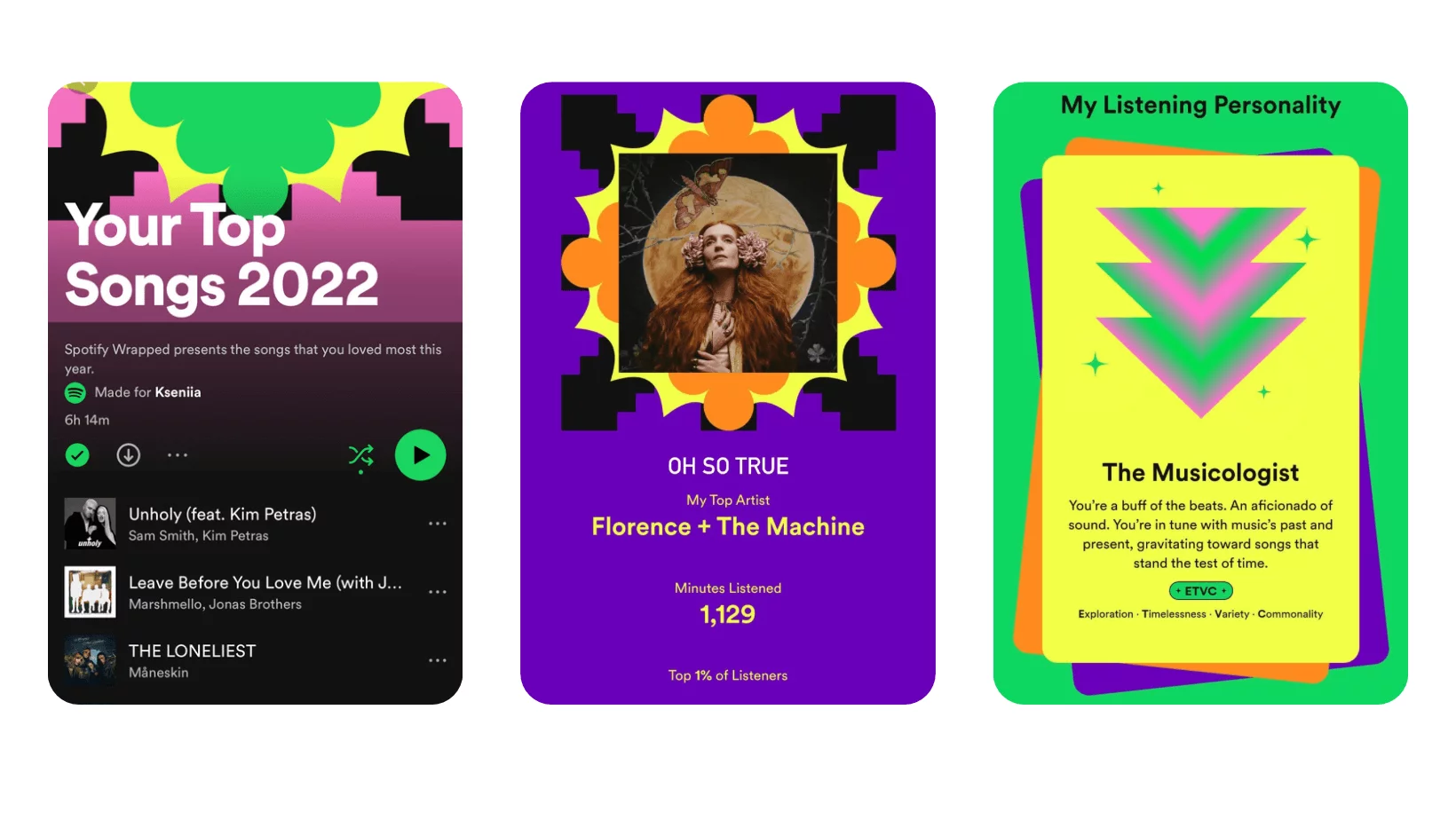
Spotify Wrapped 2022
Even though the format has stayed the same since 2016, it truly boomed in 2020 — thanks to Twitter and its insane shareable potential. Spotify Wrapped gets bigger every year, with a 15% increase in the total volume of mentions on Twitter and 17% in total engagement (according to Sprout Social’s 2022 numbers). More people see and interact with Spotify Wrapped — therefore, the established brand grows in recognition.
Content marketing campaigns
A content campaign is a strategic marketing initiative that creates and distributes valuable, relevant, and engaging content to your audience. It aims to attract and engage the audience, build brand awareness, and drive specific actions or conversions.
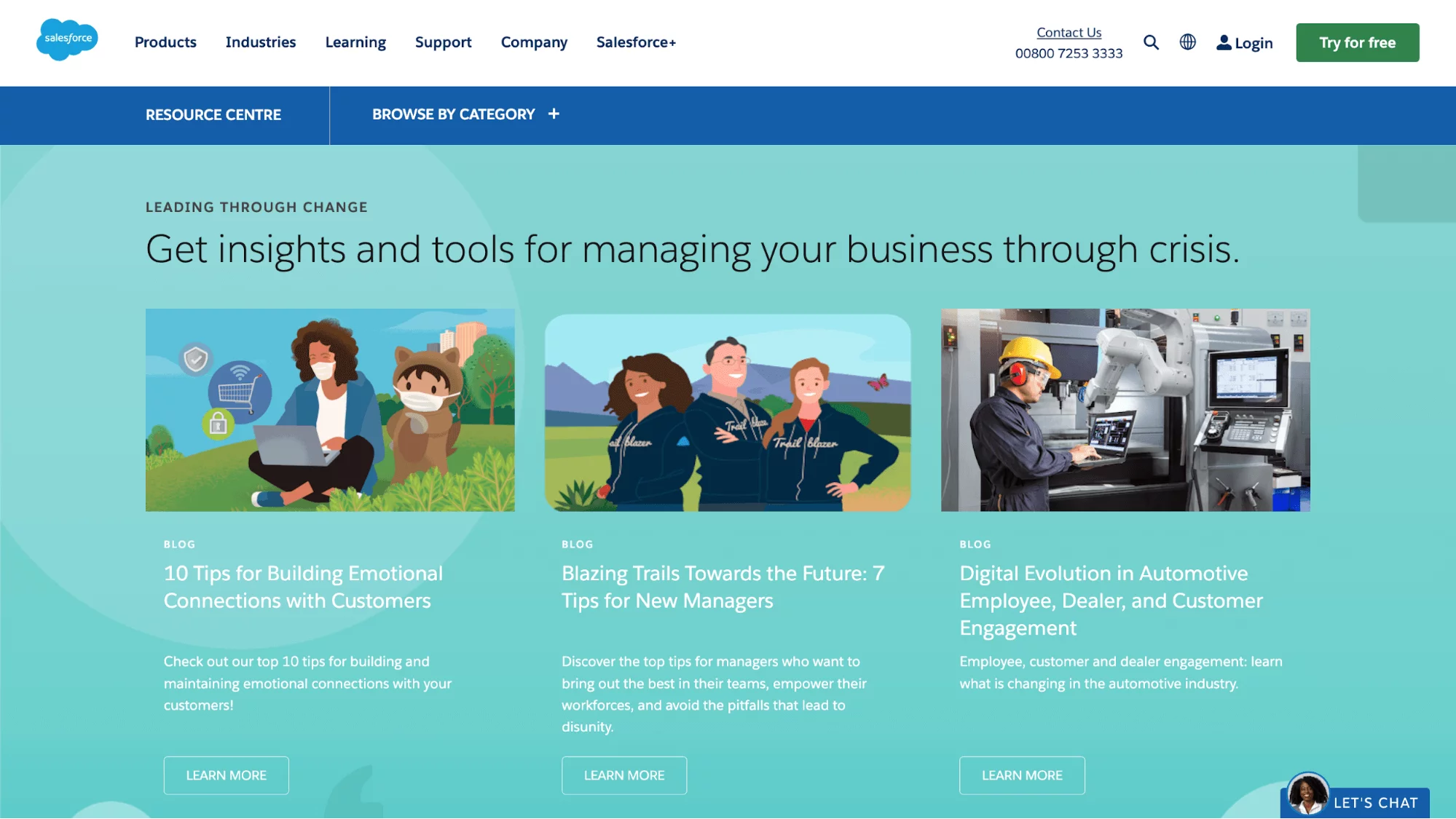
Salesforce “Leading through change” campaign
Salesforce’s “Leading through Change” campaign is an example of a very successful and impressive content initiative. In the changing landscape of 2020, Salesforce developed a series of webinars, articles, and resources that provided insights, guidance, and solutions for businesses navigating challenging times. The campaign positioned Salesforce as a thought leader, built trust with its audience, and established the brand as a go-to resource for businesses undergoing change and transformation.
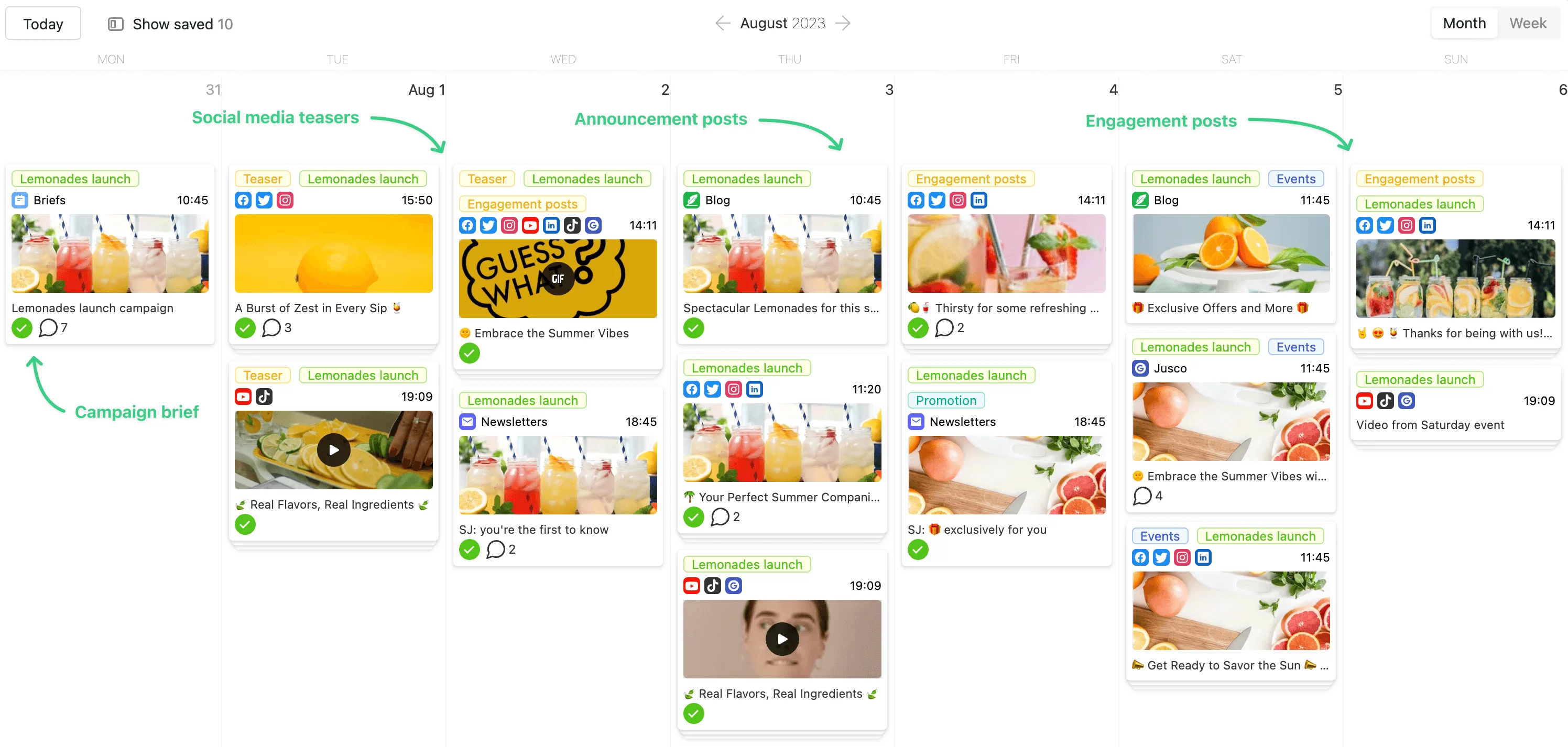
planning a content marketing campaign across multiple channels in Planable
Social media marketing campaigns
A social media marketing campaign leverages social media platforms to promote a brand, product, or service and engage with target audiences. It entails creating compelling social posts combined with a strategic posting schedule and utilizing social media perks like hashtags, shareability, viral content, etc.

“Share a Coke” campaign
One example of a blasting social media marketing campaign is Coca-Cola’s #shareacoke campaign — you probably even participated in it yourself. Coca-Cola replaces its logo with popular names (and a whole bunch of other things like Grandma, Mate, Dude, Bestie, and so on). It kickstarted one of the biggest user-generated content snowballs: people shared content featuring a Coke bottle with their name on social media with the hashtag #shareacoke. The campaign brought personalization to a whole new level, resulting in over 25+ million new followers on Coca-Cola’s Facebook in the first year of active campaigning.
Email marketing campaigns
An email marketing campaign strategically uses emails to communicate with potential and existing customers, promote products or services, and build direct relationships with subscribers. The key to success is smart audience segmentation that allows for personalized messaging.
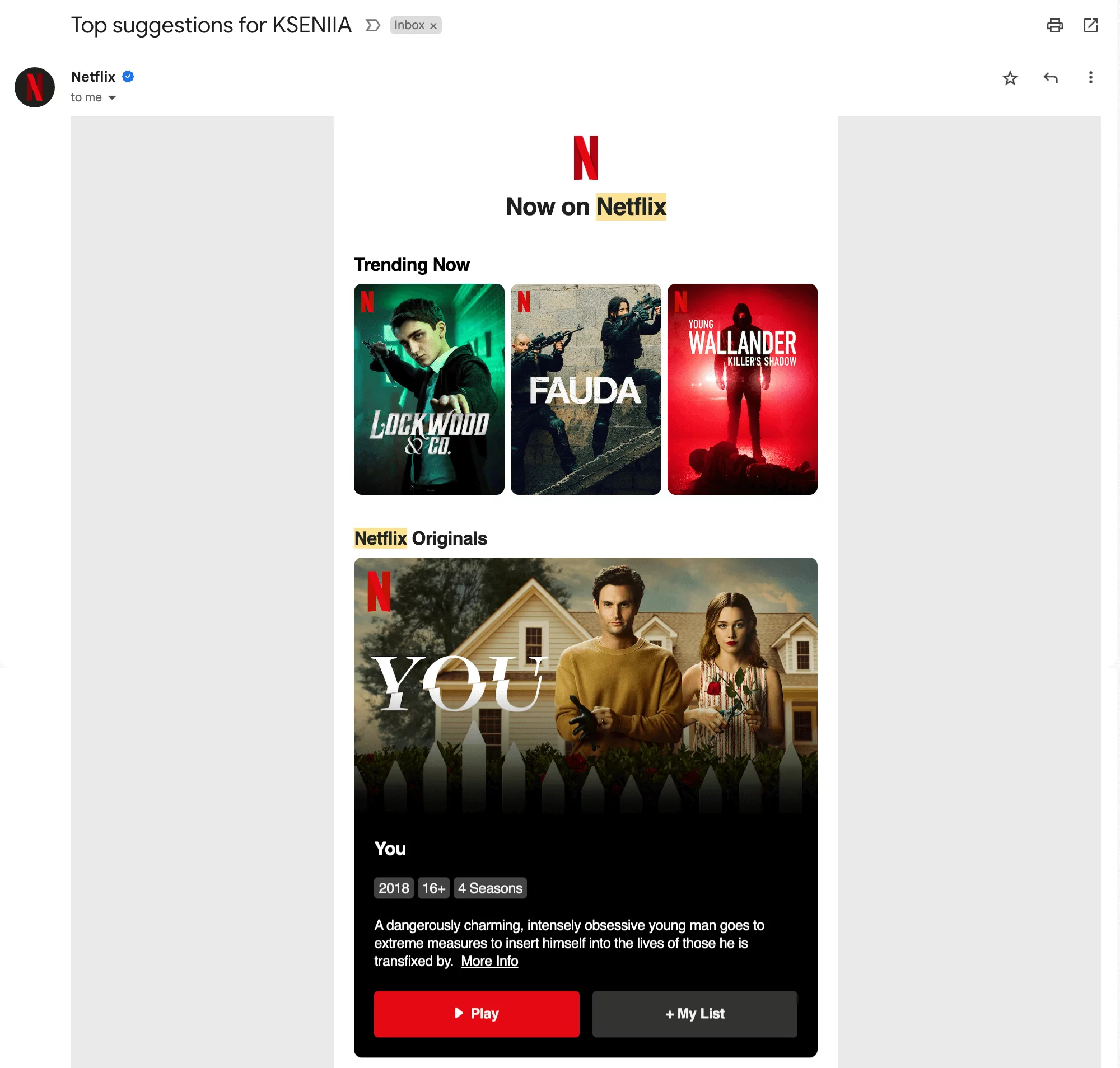
Personalized movie recommendations from Netflix
Netflix’s email marketing campaign is a notable example. Netflix utilizes personalized email recommendations and curated lists tailored to individual subscriber preferences. By leveraging user data and viewing history, Netflix sends targeted emails that suggest relevant content, highlight new releases, and provide personalized recommendations. These nifty emails keep the subscribers engaged and drive content discovery. Besides, you always have customized advice on what to browse on a movie night.
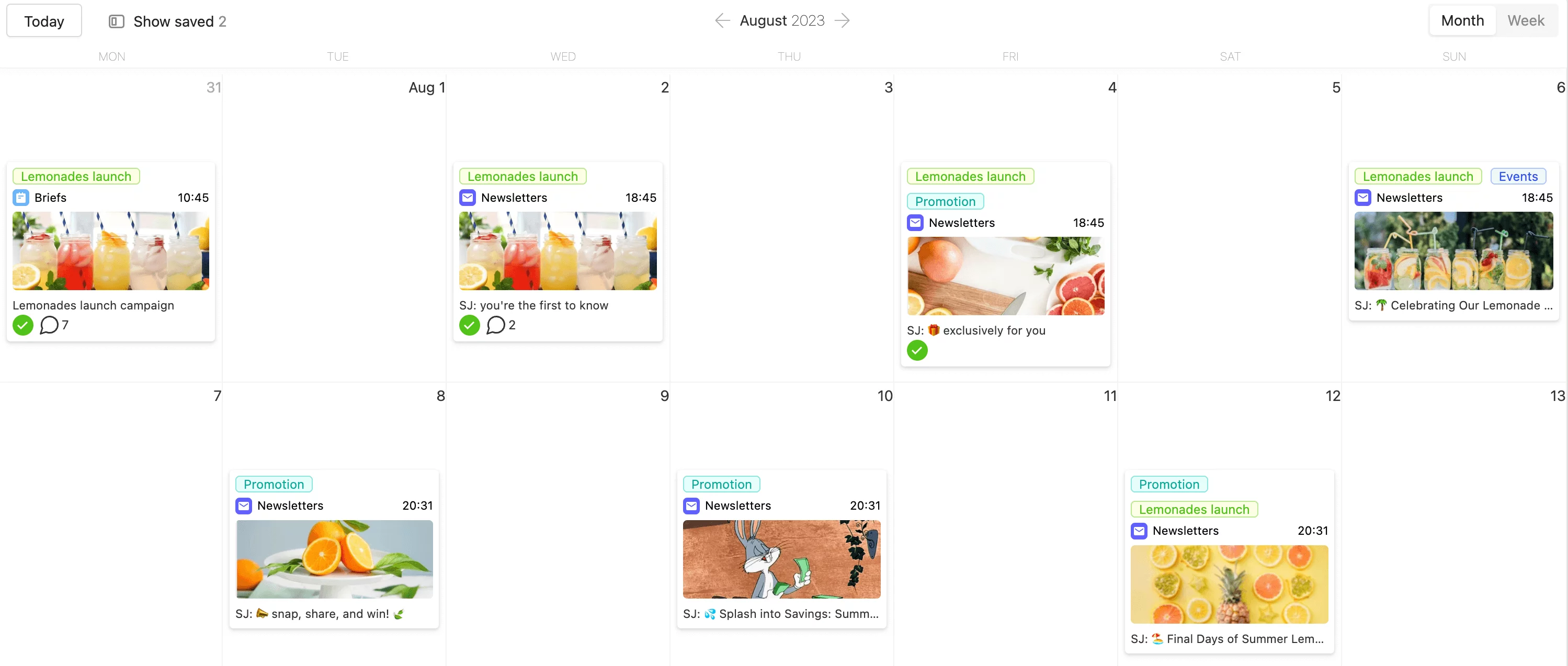
managing an email marketing campaign in Planable
5 steps to running a successful marketing campaign
If you’re an anxious marketer such as myself, you know that marketing campaign management can seem daunting. You need to take care of many things and react fast when it comes to incoming data.
Most marketing tactics include laying out the campaign project beforehand and creating an action plan to stick to. It helps keep track of all the variables and provides a base to lean on while navigating the changes. Here are five easy steps to marketing campaign planning that can help you manage your campaign with flying colors — even if you’re not great at planning things.
1. Set clear objectives
As usual, it all starts with setting a goal. What you want to achieve with the marketing campaign will define the means of communication, distribution channels, targeted metrics, and desired KPIs.
Setting the campaign goal happens on two levels:
- Overarching goal. Based on your marketing strategy, define what your brand needs now — brand awareness, product promotion, or clientele attraction.
- Specific campaign objectives. Once you know the direction you’re headed in, dig a little deeper and set specific goals for each campaign you launch.
My personal recommendation for setting specific goals is the SMART framework: Specific, Measurable, Achievable, Relevant, and Time-bound. Using this framework, you’ll end up with goals tied to reality.
Here’s an example:
- Overarching goal: increase brand awareness (where do I even begin on this one?)
- SMART goal: Achieve a 20% increase in website traffic and a 15% growth in social media followers within the next three months through targeted ads campaigns and engaging content strategies (now, that’s something I can make a task of)
2. Identity your target audience
If the target audience is misplaced, you practically send your marketing efforts down the drain with irrelevant leads. You need well-defined buying personas to ensure your campaign’s messaging hits the bull’s eye.
Buying personas are generalized portraits of your ideal potential customers. Here are five roughly outlined steps to creating one:
- Conduct research to understand your target audience’s demographics, behaviors, and preferences.
- Define their needs, goals, and desires that your product or service can fulfill.
- Outline their decision-making process and behaviors — aka, customer journey mapping.
- Create a story and a background to humanize the persona.
- Continuously refine the persona based on data and insights.
Defining buying personas helps you leverage audience segmentation and send more personalized marketing messages to each segment, improving your potential engagement. More personalization — more conversion.
3. Fine-tune creatives and messaging
Content is a huge part of marketing campaign management. Once you have your buying personas and goals settled, take on creating marketing content that would convert the targeted audience.
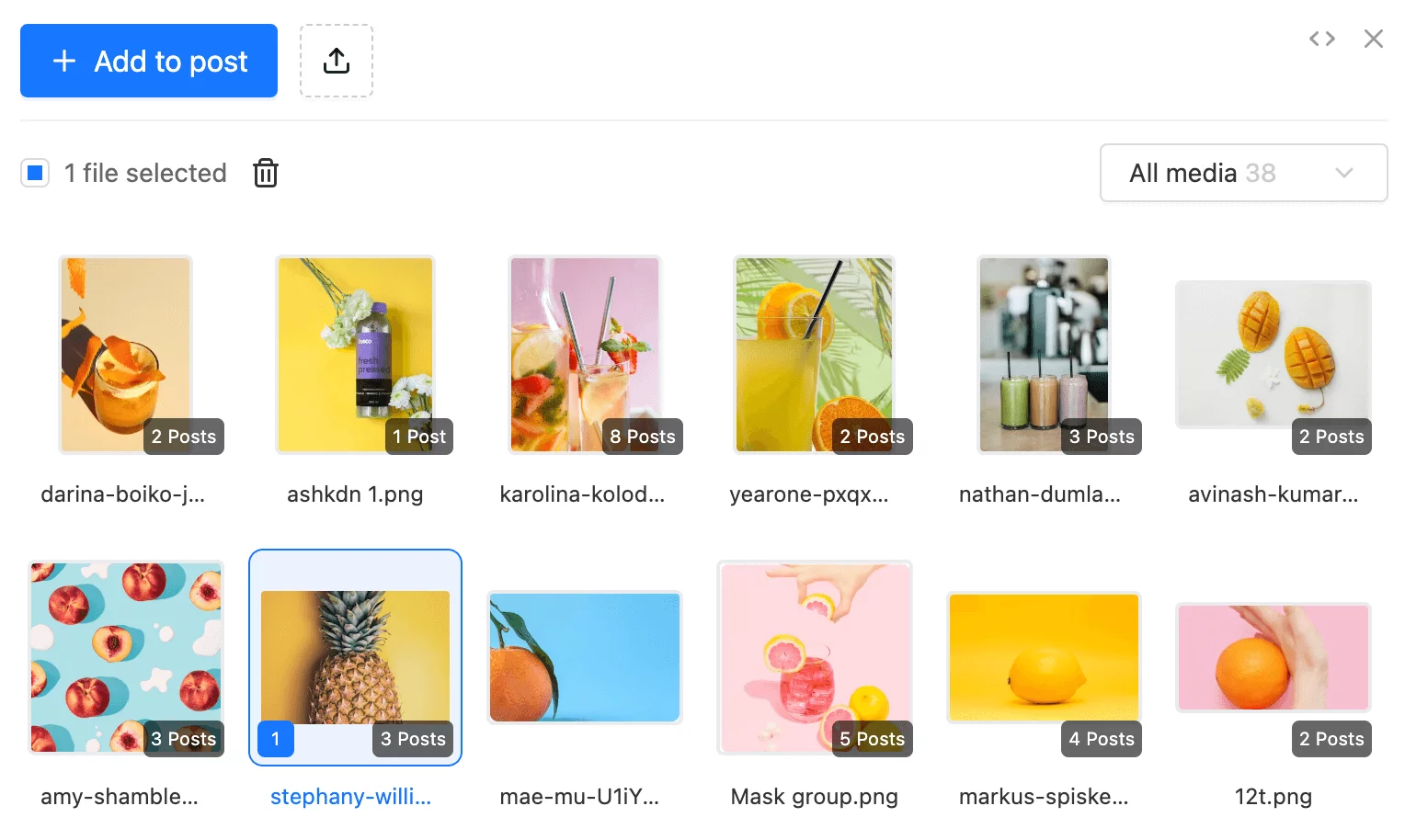
creative assets library in Planable
My top-three content marketing tips for successful campaigns are:
- Know your audience. Speak their language, understand their approaches, and follow their content consumption patterns. Say, if you’re working with a Gen-Z buying persona, you’ll have to level up your meme game and launch a TikTok, kings and queens.
- Provide value. Fluff content doesn’t convert potential customers. Regardless of your initial goal, create content that has value for your audience segments: people are more likely to engage if they’re gaining something from your marketing campaign.
- Set a call to action. You don’t want to be pushy and sales-y — I get that. But the CTA is the core of marketing campaigns, whether you’re trying to create awareness or help the sales team. Finding the right balance between imperative “buy this now” and shallow hints is the key to a good converting CTA.
4. Develop a foolproof content distribution strategy
Choosing the proper marketing channels to reach your target audience is an exciting task for marketing teams. There are many factors in action, and the campaign manager’s mission is to analyze them and build a campaign workflow for relevant content distribution.
- Budget. Some channels are more expensive than others. Campaign managers plan according to the budget, and the key is to find the most suitable channel in your price range.
- Target audience. Imagine your target audience is retired housewives with a soft spot for gardening. Which channel would make more sense to contact them: TikTok or Facebook groups? Or TV ads?
- Goals. Aim for mass channels with broad audience coverage if you’re looking for hypervisibility. However, if you have a sales target to reach, consider more targeted and niche platforms — for instance, industry media or a specific eCom website that is a part of the customer journey.
Creating a solid distribution strategy has been a total game-changer for us! I used to think we promote enough without a distribution strategy. ‘Just use all the channels and publish, what’s the big deal?!’
It’s a huge deal — mapping all our content marketing efforts involved in a distribution strategy made all the difference. We now have a clear overview of what we’re doing, and it empowered us to amp up our promotion, keep things consistent, and strike that perfect balance.
Our results look much better now! Since we started organizing our content distribution, our event registrations have literally doubled.
Miruna Dragomir, CMO @ Planable
Once you have formulated your strategy, make sure your team executes to perfection and everyone is aligned to the campaign plan. Consider using marketing agency project management software for an extra layer of support.
5. Track campaign performance and optimize for success
Google Analytics remains campaign managers’ best friend. Monitoring campaign results helps the marketing team evaluate the performance and adjust marketing campaigns if necessary. It’s the only way to objectively measure success, compare results with the initial targets, and come up with certain conclusions for future campaigns.
Which key metrics should you look for? It depends on your goal, but here’s a list of the most common ones:
- Reach and Impressions. Reach is how many unique users saw your message. Impressions are how many times the message was seen in general, including repetitive views.
- Click-Through Rate (CTR). CTR measures the percentage of people who clicked on your message compared to the total number of impressions.
- Conversion Rate. It’s the percentage of users who performed the action you aimed for: clicked the link, filled in the lead generation form, subscribed to a newsletter, etc.
- Cost per Acquisition (CPA). CPA measures the average cost of acquiring a new customer or lead (total campaign cost divided by the number of clients acquired from this campaign).
- Cost per Click (CPC). CPC measures the average cost paid for each click on an ad.
The challenges of the marketing campaign management strategy
Even with a plan, the marketing campaign management process is no piece of cake. Most marketing teams face these challenges:
- Budget optimization. Managing and optimizing a campaign budget across marketing channels and tactics while maxing out ROI demands careful planning, tracking, and decision-making.
- Team collaboration. Effective communication across different functions and departments can be challenging. You need clear roles, a defined review process, and, ideally, — marketing automation software to keep things fleet.
- Timeline and deadline management. Managing the campaign timeline, meeting project deadlines, and gathering stakeholders’ feedback without delays require A+ project management.
- Changing customers’ behavior. To keep your marketing efforts efficient, you’ll have to monitor the rapidly evolving consumer preferences and trends and adjust your strategy to remain relevant.
These challenges are dire, but the good news is — marketing campaign managers can tackle them with the right marketing campaign management tool.
What features to look for in marketing campaign management software
The market is full of campaign management tools that can make the life of a marketing manager much easier. But how do you navigate around all the tools presented?
When choosing a marketing campaign software for effective campaign management, scout for several most important features:
Collaboration mode. Content management requires a lot of collaborative working: from crafting all sorts of campaign content like emails, ads, blog posts, and social media posts to approving the assets and getting a green light from the stakeholders. Bonus points if the approval workflow is automated and has multiple levels.
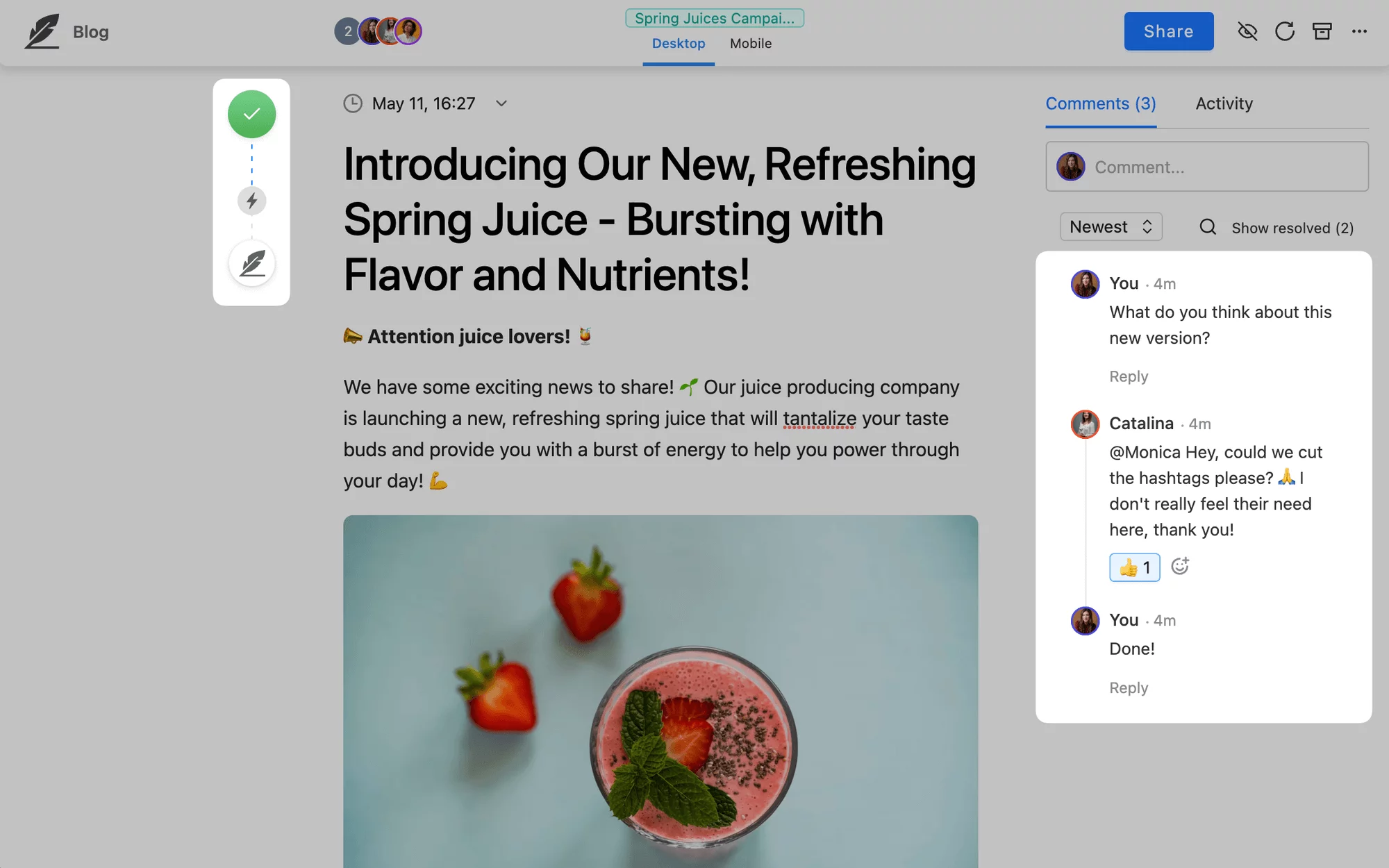
Blog post collaboration in Planable
Marketing content calendar. With many content pieces coming together as a puzzle, tracking each task and project status is crucial for campaign and marketing workflows. Getting a bird’s-eye view of the campaign schedule helps the marketing team better understand their efforts and plan content ahead.
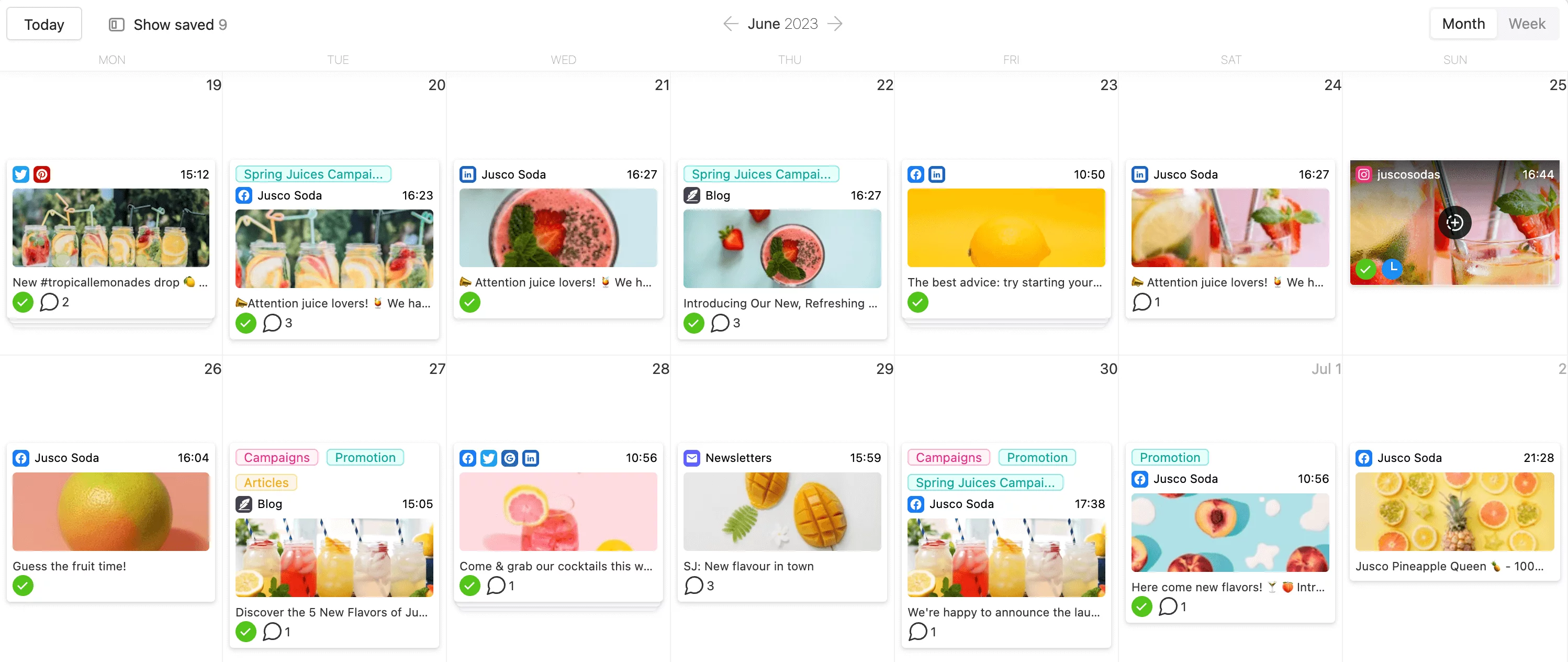
Marketing campaigns calendar in Planable
Media library. A marketing campaign manager has to be swift to act according to the changes in customer behavior. A media library with pre-approved assets speeds up new creatives’ creation and launch, allowing teams to save momentum and stay on track without interruption.
Social media scheduling. Having a scheduling and publishing tool is a game-changer for social media campaign management. It’s much easier and faster to schedule social posts from one dashboard rather than jump between Business Suite (ugh), Linkedin, Twitter, and other social media platforms.
Planable has all of the features above and a little extra. The platform offers 50 scheduled posts for free with no time or feature limit — just saying.
Planning for success as a marketing campaign manager
The marketing campaign management process is challenging. But, like any challenge, it becomes an adventure with a trustworthy sidekick — perhaps Planable is yours? Explore Planable’s rich collaboration features, visual content creation, and automated approval system, and manage marketing campaigns in a blink of an eye!




